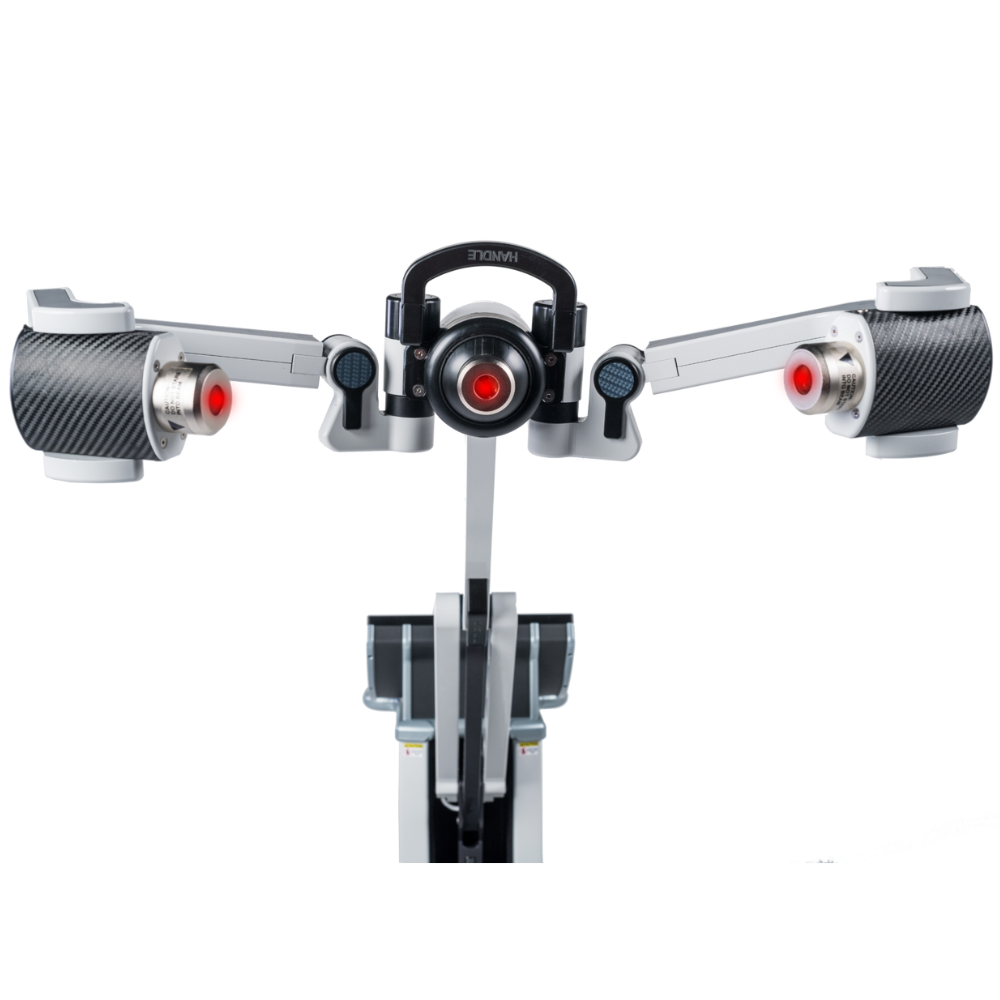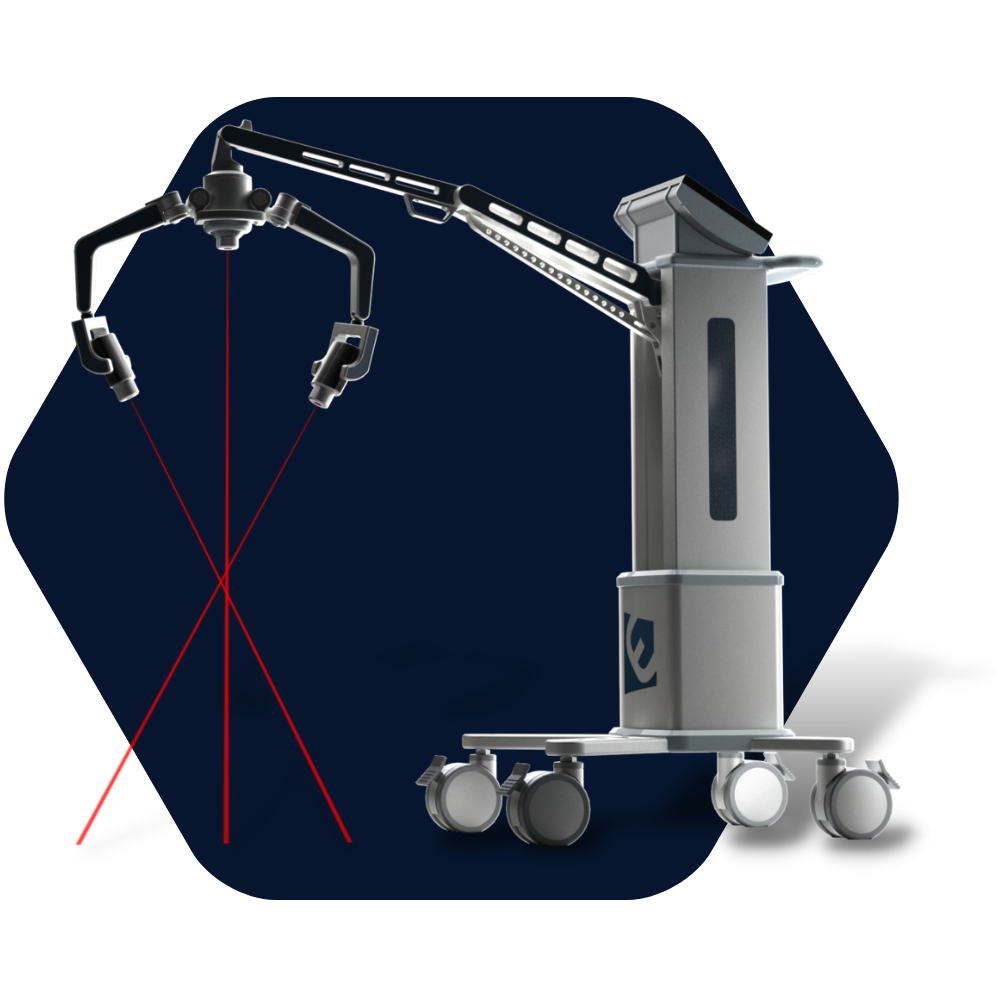
There are ~11,000 published studies on LLLT reporting zero negative side effects. Click below for resources explaining the science behind Low-Level Laser Therapy and the brain.
No other laser on the market can compete with the Erchonia FX-635.
Download our mobile brochure to learn more about the benefits of the laser, how the laser works, FDA clearances and more!
Your first treatment is only $49!
Click here to schedule, or call (503) 597.8098 today.
Of course! There are nearly 11,000 peer reviewed studies on the benefits of low-level laser therapy, and a lot of it is geared towards the brain!
Ask about our “1 treatment challenge” where we expect to see a 30% improvement (minimum) in your symptoms immediately following the 10 minute treatment.
Your first session is only $49!
Migraines, headaches, dizziness, vertigo, TMJD (jaw pain), neck pain and symptoms associate with concussion and whiplash are the most common reasons for using LLLT.
We have also noticed improvements in:
1. Improved Brain Function.
Improved brain cell regeneration by INCREASING:
Improved brain cell regeneration by DECREASING:
2. Accelerated Tissue Repair.
Blood Vessels
LLLT significantly increases the formation of new blood capillaries (angiogenesis) while also increasing the size (vasodilation) of the blood vessel, improving blood delivery to the brain which ultimately accelerates healing.
Muscles Tendons & Ligaments
LLLT accelerates healing to injured soft tissue (muscles, tendons, and ligaments) by stimulating stem cell production, collagen synthesis, and DNA synthesis.
3. Anti-Inflammation.
LLLT reduces brain inflammation by:
Laser is a far better alternative than taking Advil, ibuprofen, Tylenol, and other anti-inflammatory drugs (NSAIDs) that severely damage your stomach and gut.
LLLT operates under a principle of science known as photochemistry and works at the cellular level.
LLLT uses a specific wavelength of light (635nm) to stimulate a micro-structure within the brain cell called mitochondria (nicknamed the “powerhouse” because it produces ATP).
Enzymes and proteins inside the mitochondria contain photoreceptors, so, when concentrated photons of red light penetrate the head, into the brain, they target the mitochondria and stimulate numerous signaling pathways.
Yes! Next time you are enjoying a sun-filled day, close your eyes and look up at the sun. What color do you see? Red. Although this is an elemental description it clearly illustrates the penetrative capacity of red photons. Research has quantified the amount of red light that can penetrate through various degrees of skin thickness and other tissue structures like the skull. This is why you can laser the stomach and still see chronic low back pain improve.
No! LLLT (635nm) does not deliver a significant amount of energy therefore no heat is produced.
Infrared lasers are the ones that produce heat as they range from 700-1000nm. You NEVER want to shine a heat generating laser on the brain as it is too powerful.
LLLT (cold laser) operates under very similar parameters to taking medication, producing no macroscopic sensation but directly impacting how the body’s cells function and behave.
Millions of biochemical reactions are taking place at this very moment without any comprehension or recognition.
Completely! Every class 2 laser, low-level laser, or cold laser, is completely safe to use on all parts of the body, for as long as you want, without any side effects or harm. Hence the reason why it’s not necessary to wear glasses with this class of laser.
Class 2 lasers have one purpose, to create a biochemical reaction. To stimulate the mitochondria of the cell to activate a biochemical change, NOT a thermal change. This concept is similar to how plants use sunlight to grow. Plants don’t use the heat from the sun to grow. The plant is able to grow because plants have photoreceptors within their cells and when sunlight is absorbed by the plant this causes a biochemical reaction causing the plant to grow through stimulating protein synthesis and DNA replication.
The lasers you should be careful with are class 4 lasers, high-powered lasers, and hot lasers that generate heat. If you use these lasers for too long, they can damage the tissue. We recommend staying away from these.
They will try and advertise that their laser is more powerful, generates heat, and can penetrate the tissue deeper. This is irrelevant because the goal should not be to penetrate the tissue deeper or heat up the tissue, the goal should be to stimulate a biochemical effect in the mitochondria of the cell. This is what accelerates the healing, and you don’t need to power your way into the cell to accomplish this.
To make matters better, there is a plethora of research on LLLT and brain health. Do you think Dr. Burt would laser his own brain if it was harmful?
Clinical studies demonstrate that the positive outcomes associated with laser therapy are immediate and can last many weeks. Treatment length can be proportional to the amount of tissue damage there is. The more inflammation, the longer it will take to see the lasting results of the laser. Depending on the severity of the injury, research supports that it is best to treat acute and chronic pain and inflammation 2-3 times per week for 4 weeks. Once the tissue has started to heal, research has supported that the treatments will last longer. This is why weekly treatments are recommended once pain and inflammation are less. This is true as long as the tissue does not get re-injured. If the underlying injury is not resolved, inevitably the tissue will re-inflame and the pain will return.
Laser coupled with chiropractic care has been shown to speed up tissue recovery even faster by keeping inflammation levels low, lowering the risk of re-injuring the tissue.
Although a laser pointer is emitting an actual laser wavelength, there are power considerations that may cause harm. Laser therapy is very similar to the parameters required for medication success.
For instance, when one consumes medication it is the molecular structure of the drug that is the driving factor for therapeutic success. Similarly, the wavelength or color of the laser device is what dictates its success. If the color is not correct therapeutic efficacy will be lost.
Another component of a medication that must be satisfied is dosage, in order to produce an outcome the dosage must be correct, too little there is no response too much an adverse event can be provoked. Similarly, laser therapy must be delivered at the appropriate dosage and a laser pointer offers too much power and can induce an inhibitory or damaging effect.
LLLT is not a new concept; in fact, light therapy dates back as far as 1,500 BC when Egyptian
cultures built solariums at the top of mountain ranges to harness ultraviolet light to treat certain skin disorders. LLLT has been studied extensively starting in the early 1960s and has earned over 2000 peer-reviewed publications.
The challenge has always been the delivery mechanism. How do you generate a coherent light source in which the photons move in parallel with each other?
In 1998 Erchonia Corporation designed the first “line-generated” (the beam shows up as a line on the body, not a dot) coherent laser light source which enabled clinicians to treat with an appropriate photon configuration. Although this technology is now well established, research is still less than that of most medications.
Every day more and more physicians are observing the natural benefits of laser technology, and as new studies are published which illustrate the therapeutic benefit, more physicians will embrace LLLT.
No comparison. Laser therapy has been proven to stimulate tissue recovery by targeting the mitochondria of the cell whereas infrared sauna is supposed to help with detoxification. They are completely different modalities and both are found to be helpful.
Laser therapy uses a highly concentrated wavelength of red light whereas red light therapy uses LED lights. The problem with LED lights is they are not concentrated, meaning they scatter. For example, if you stood 100 feet away from a wall and pointed the laser at the wall, you will clearly see the laser line on the wall. You would not be able to see the LED light show up on the wall. What makes the laser 10 minutes to treat an injury, would take a LED 1 hour to have a similar effect.
Our laser manufacturer, Erchonia, was curious about this so they researched it.
Erchonia used red light LEDs as a placebo in 4 of their peer-reviewed research studies. The results? The laser group beat the LED group by 60%. Does red LED light help? Yes, according to the study it helped reduce pain by 5%.
Unfortunately, no. Health insurance companies work closely with the drug and surgery industry, if too many people used laser, they would stop taking drugs and reduce the chances of needing surgery. That wouldn’t be good for business, right?

Phone & Fax: 503.597.8098
10200 SW Eastridge St, #235
Portland, OR 97225
Suffering from Chronic Back Pain?
Download this perfect guide!